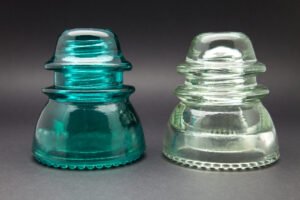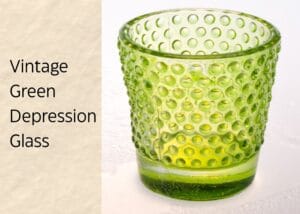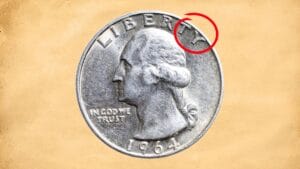If you are starting a vintage glass insulator collection, the first name you will hear in the antique market is the Hemingray-42! Manufactured by Hemingray Glass Company, once the largest manufacturer of glass insulators in the United States, this glass item is on every collector’s list today.
In this guide, I will show you some easy-peasy ways to identify and estimate the value of an old Hemingray-42 glass insulator by assessing its manufacturing year, color, condition, and markings. Trust me, they are worth more than you think!
About Hemingray Glass Insulators
Insulators are non-electrical conducting objects invented to cover telegraph lines and telephone poles and insulate the current running in the wires against rain, fog, heavy wind, etc. Introduced in the 1850s, these were usually made of glass, porcelain, or a non-conductive composite polymer material.
Hemingray Glass Company, aka R. Hemingray & Company, made its first Hemingray-15 glass insulator for telegraph lines in the 1870s. From then, the company made several types of glass insulators until it was closed in 1972.
Of all the glass insulators Hemingray Company produced, the Hemingray-42 insulator introduced in the early 1920s has been exceptionally popular. In fact, it’s one of the most collectible antique pieces today.
Finding the Value of Hemingray-42 Glass Insulator

A classic vintage Hemingray-42 glass insulator can be worth anywhere from $5 to $100 today, depending on a few crucial factors.
Condition
An old Hemingray-42 glass insulator in good condition with less or no damage, such as severe chips, cracks, or discoloration, will likely be worth more than one that is damaged. Generally, the value of a pristine-condition Hemingray 42 insulator is $15 or above.
Glass Color
After condition, color is the primary valuation factor. Hemingray 42 glass insulator comes in clear, blue, aqua, ice blue, and ice green colors. Out of these, clear ones are less valuable than colored ones.
On the other hand, a rare color like deep blue or deep green and two-tone glass insulators (blue-green or clear-blue) can fetch high returns. An authentic cobalt blue Hemingray glass insulator sold for $40 on Etsy.
Production/Manufacturing Errors
If an antique glass insulator displays manufacturing errors, like bubbles, amber or white swirlings, or rubs, it can be worth more than the average value. In rare cases, there may be an extra low-set pinhole in the insulator, a type that collectors address as a “dome glass” insulator.
Similarly, a glass insulator with any coloring anomaly, such as accidental streaks or mixed colors, can fetch high returns from collectors, but only if the error is authentic.
Rarity
A Hemingray-42 insulator variation which is hard to find will generally be more valuable. So, it’s best to check the availability of your insulator on online sites, such as eBay, Etsy, and Amazon, based on its shape and color.
Keys to Identifying a Hemingray-42 Glass Insulator
Identifying a Hemingray-42 insulator is not as difficult as it seems, thanks to the different numbers and markings embossed on it that can help you identify it. Let’s see these features in detail!
Brand Embossing
The first clue to spot an authentic Hemingray insulator is the brand embossing, which is on the front (F-skirt_). Common embossments found on Hemingray glass insulators are: “HEMINGRAY,” “H.G.CO.,” or “Patent Dec. 19, 1871.”
But the No. 42 style likely has the “HEMINGRAY-42” marking on the F-skirt (front) and “MADE IN U.S.A.” embossed on the R-Skirt (back).
In some very rare cases, you may find a special embossment on the skirt, such as “MR” above “HEMINGRAY.” Such a rare piece can be valuable.
Style Number (42) & Variations
Hemingray Glass Company assigned a specific number to different styles of insulators it produced over time. This style number is often embossed on the insulator. So, obviously, the Hemingray-42 will have the number ‘42’ embossed on it.
Here are the key features to identify a No.42 Hemingray Glass Insulator:
- A modern square-type wire groove
- A double petticoat type
- Closely packed threads or grooves
- A long, smooth leakage path
- Sits close to the cross-arm of poles to give pin protection
Besides, the Hemingray-42 style has two known variations. The first common variation has rounded drip points at the base, while the second one has sharp drip points and is rarer.
Date Codes & Age Markings

The Hemingray-42 insulator was introduced in 1921 and continued until the 1960s. After 1933, Hemingray Glass Company started to add dating codes and numbers to its insulators, which can help you date your vintage Hemingray-42.
- 1933: In 1933, a capital ‘O’ was marked under the company’s name on the front of the insulator.
- 1934-1939: A number was added next to the letter ‘O’ indicating the manufacturing year. For example, O-5 means 1935, O-6 means 1936, and O-9 means 1939.
- 1940 onwards: In 1940, the company began embossing insulators with a combination of the mold number and two-digit number (date code or manufacturing year). Insulators made after 1940 may have a number code like “20-45” on the back, which means the insulator was made in 1945.
- Dots: Many insulators made after 1941 have dots next to the MM-DD (mold no. and manufacturing year) set. These dots represent the number of years since the insulator mold was made. For instance, three dots next to the dating code “24-45” means it’s a 1945 mold, and the insulator was made in 1948.
CD Numbers (Consolidated Design Numbers)
After glass insulators became popular as collectibles, collectors jointly created a classification number system, called the Consolidated Design (CD) number that indicates the shape of the insulator. The Hemingray-42 glass insulator has CD number 154.
But remember, due to variations in the shapes of different insulator styles over time, a single insulator style may have multiple CD numbers, too.
Note: The CD number represents the type of glass insulator regardless of its manufacturing company. It does not apply only to Hemingray insulators.
Spot a Fake or Reproduced Hemingray-42 Insulator
Since Hemingray-42 is one of the most popular vintage glass insulators, sellers often try to trick collectors into purchasing fake insulators as rare or unique ones. But you can identify such a forged Hemingray-42 insulator in the following ways:
Check the Colors
If you find a brightly colored Hemingray-42 insulator with a date code combination on an online auction site or sale, it is likely a stained clear insulator because Hemingray stopped making bright insulators after 1933.
Besides, beware of any unique color. You may spot some ruby red or purple Hemingray-42 insulators on online sites, but the company didn’t manufacture any such No. 42 insulators. These might be stained or reproduced.
Check the Weight
Compare the weight of your insulator. Reproduced insulators are mostly made of resin and are lighter than the original glass insulators. These are also popular as “impostulators” among collectors.
Beware of Unlisted Style & Shape
Always check the style and shape of an insulator via the CD numbers and styles. Some unusual insulator shapes can be easily made by cutting two damaged insulators and gluing them together to give them a new shape.
You can learn more about identifying fakes or replicas with the help of the Hemingray database.
Often overlooked as junk, vintage glass insulators could actually be worth a small fortune. Especially Hemingray glass insulator No. 42 has a separate fan base among collectors. So, make sure you analyze its true worth before buying or selling it.
Note: This article is intended for informational, educational, and entertainment purposes only. Some images are illustrative and may not represent actual brands, products, or related entities. All trademarks, product names, brand logos, packaging, and other intellectual property referenced remain the exclusive property of their respective owners. Any brand mentions or references are provided solely for descriptive and educational context and do not imply any formal or commercial association.










